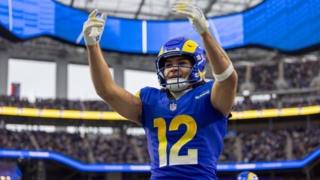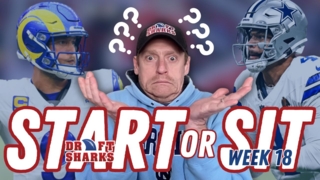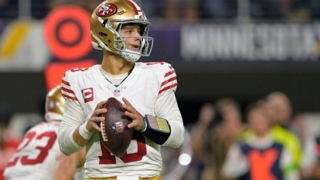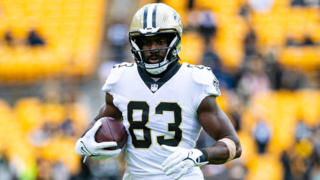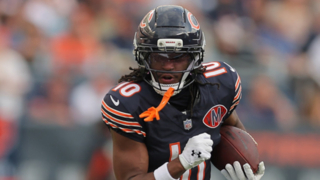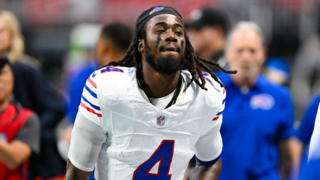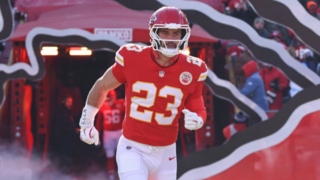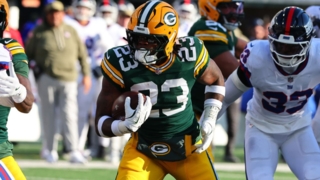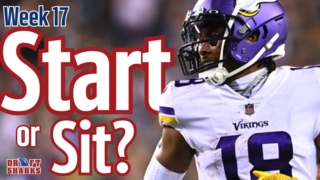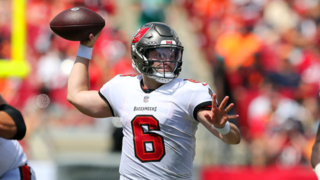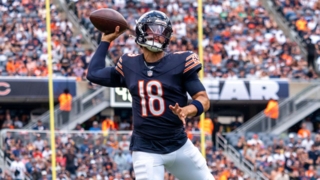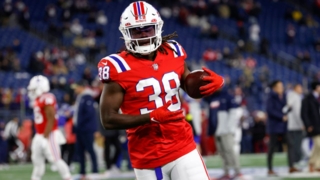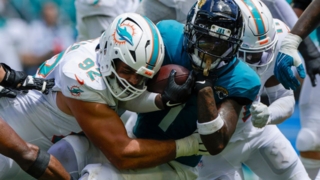Strategy Guide for Superflex and 2-QB Fantasy Football Drafts

If you’ve already set up the Draft War Room for your superflex or 2-QB draft, then I bet I know your first question …
QBs always fly off the board in my draft. Are these rankings correct?
Yes. And the point of this article is to show you why.
I’m not surprised that your league tends to be more QB hungry than the DWR says you should be. The whole purpose of both of these formats is to increase the scarcity of QBs and get the position’s value closer to its real-football value. And they should certainly go much earlier than in 1-QB formats.
But many drafters overreact to that rule difference. And that can present opportunity if you play it right.
Superflex ADP
It’s long been difficult to get worthwhile ADP for this format because it simply doesn’t get played to nearly the scale of 1-QB formats. That changed with more superflex tournaments this year.
Let’s take a look at the QBs in Underdog superflex ADP …

(New to Underdog? Get a 100% match on your 1st deposit with promo code “SHARKS.”)
That’s 9 QBs inside of Round 1 for the 12-team draft format. We see 6 more in Round 2, and then things start to spread out a bit.
This is meaningful ADP, because it’s all from money drafts. It’s also all from tournaments, which can mean variations in roster building. If anything, though, I’d say that aspect should have made drafters a bit more willing to wait on at least their 2nd QB.
So the chart serves 2 purposes:
1) It displays the QB hunger of the multi-QB format.
2) It lays the groundwork for showing how a little patience can pay off.
First of all, we’re going to treat superflex (where a QB can be played in a flex position, but you don’t need to start 2) and 2-QB lineups as the same for this article. Why? Because even though you don’t need to start a 2nd QB in a superflex lineup, you’re gonna want to.
It’s the highest-scoring position in nearly any format. In our default PPR scoring last year, 31 QBs averaged 16+ points per game, compared with 10 RBs, 13 WRs and 2 TEs. When you’re filling that flex spot, you’re generally pitting that 2nd QB against RB25+ or WR25+ or 37+ (depending on whether you start 2 or 3 WRs). So the expected points between them isn’t even close.
You should plan to start 2 QBs every week throughout the year, and then fill in that flex spot with another position only if you need to. That’s why you won’t notice much difference between the QB placement in the DWR for a superflex format vs. 2-QB.
Now let’s get to placing these QBs on the draft board.
QBs vs. the Field
We know the position outscores the others. But that doesn’t mean you need to focus on filling it before getting to the rest of your draft here.
Just like in a 1-QB format, you’re not simply comparing the projected points of a QB vs. the projected points of other positions. You’re evaluating QBs vs. other QBs. That means keeping in mind the scoring you can still find from the position as the draft progresses.
(Find more on the position in my QB Strategy Guide and the 2021 QB Scoring Review.)
Let’s take a look at how each position scored last year.

Those lines represent the top 24 in PPR points per game for each position in 2021. They probably don’t look that different overall. But look closer to the beginning and you’ll see steeper declines at each of the other 3 positions than at QB. Let’s zero in on the top 12 now.

It certainly can work out to start your superflex/2-QB draft with a pair of top-12 QBs. But if you elect to pass on a QB at any of your 1st 3 turns, then you’re likely doing so for a guy with stud potential at another position.
Here are the non-QBs inside the 1st 3 rounds of Underdog’s current superflex ADP (half-PPR scoring):
RB
Jonathan Taylor (3.0 overall)
Christian McCaffrey (8.5)
Austin Ekeler (20.5)
Najee Harris (24.0)
Derrick Henry (28.0)
Dalvin Cook (30.0)
Joe Mixon (31.0)
Aaron Jones (36.0)
WR
Cooper Kupp (11.5)
Justin Jefferson (15.0)
Ja’Marr Chase (18.0)
Davante Adams (26.5)
Stefon Diggs (28.0)
CeeDee Lamb (31.5)
TE
Travis Kelce (23.5)
Mark Andrews (30.5)
Kyle Pitts (32.5)
It is quite possible to start your draft like this:
1st-round QB
Justin Jefferson
Joe Mixon
Saquon Barkley
Keenan Allen
Ryan Tannehill
Brandin Cooks
Carson Wentz
I get it. Tannehill and Wentz? Thrilling.
But that’s kinda the point. Those guys finished 13th and 14th in QB scoring last year. Tannehill lost A.J. Brown, but that’s clearly factored into his ADP. And Wentz has more to work with among Washington pass-catchers than he had last season with Indy.
And these are just examples, of course. The specific names can and will vary. And so can the plan.
If Cooper Kupp or Christian McCaffrey slides, you can take him, grab an early-Round 2 QB and go from there. Perhaps you kick off Round 1 with Josh Allen, hit 2 other positions at the 2-3 turn and then double up on QBs at the 4-5 turn.
And maybe your league runs a little differently or lets a particular QB slide further than you think he should. In that case, there’s certainly nothing wrong with pouncing on the QB value.
The takeaway here: The format increases QB scarcity. But unless you really wait too long, QB value will probably not be as scarce as you think.
Let your Draft War Room help guide where the right moves are for your specific situation.
Late-Round Options
One final aspect to keep in mind here is that the format makes “handcuff” QBs a thing.
If your league is like most in the format, then a team’s backup will get claimed on waivers as soon as the starter goes down. So instead of bothering with players such as Eno Benjamin, D’Onta Foreman or Ameer Abdullah late, go ahead and stash an upside backup at QB.
Our Injury Guide reveals a few situations worth a look:
Carson Wentz (77% injury probability) >>> Taylor Heinicke
Tua Tagovailoa (73%) >>> Teddy Bridgewater
Daniel Jones (61%) >>> Tyrod Taylor
Marcus Mariota (40%) >>> Desmond Ridder
Jameis Winston (29%) >>> Andy Dalton
Josh Allen (26%) >>> Case Keenum
There’s also some upside in the uncertain situations (depending on how soon you draft) in Seattle and Pittsburgh, with talented pass-catchers awaiting QB-competition winners in both offenses.
Draft using the best dynamic tool in the industry. Our fantasy player valuations (3D Values) change during your draft in response to...
- Exact league settings - direct sync
- Opponent and Team Needs
- Positional scarcity & available players
- Ceiling, injury risk, ADP, and more!
You need a dynamic cheat sheet that easily live-syncs with your draft board and adapts throughout your draft using 17 crucial indicators.
Get your Draft War Room Today
 Redraft
Redraft Dynasty
Dynasty Best Ball
Best Ball